A nearly forgotten mid-1970s test vehicle built and flown at NASA-Dryden. NASA description:
The Oblique Wing Research Aircraft was a small, remotely piloted, research craft designed and flight tested to look at the aerodynamic characteristics of an oblique wing and the control laws necessary to achieve acceptable handling qualities. NASA Dryden Flight Research Center and the NASA Ames Research Center conducted research with this aircraft in the mid-1970s to investigate the feasibility of flying an oblique wing aircraft. The oblique wing rotates about a pivot to allow the wing to be set at its most efficient angle for the speed it is flying. At higher speeds the wing takes advantage of the gains achieved by a swept wing while offsetting some of the drag producing disturbances. The oblique wing concept could result in transonic drag reduction and have the added benefit of producing corresponding fuel savings.
The aircraft’s wing was capable of being skewed up to 45 degrees left wing forward. The aircraft was flown in two configurations, the short and long tail version. To aid in the remote piloting task, a television camera was mounted in the nose of the vehicle to provide forward looking views. Power was provided by a 90-horsepower, four cylinder, air-cooled, reciprocating engine.
The flight program was limited to three flights flown over Rosamond dry lakebed at Edwards Air Force Base, of approximately 1 hour each. After the first flight, longitudinal stability problems required a configuration change. The tail was moved back three feet and this configuration was used for the last two flights. Maneuvers were performed at wing skew angles of 0 to 45 degrees. This program provided information which led to flight testing a piloted aircraft with an oblique wing, called the AD-1.
4 Responses to “Oblique Wing Research Aircraft”
Sorry, the comment form is closed at this time.
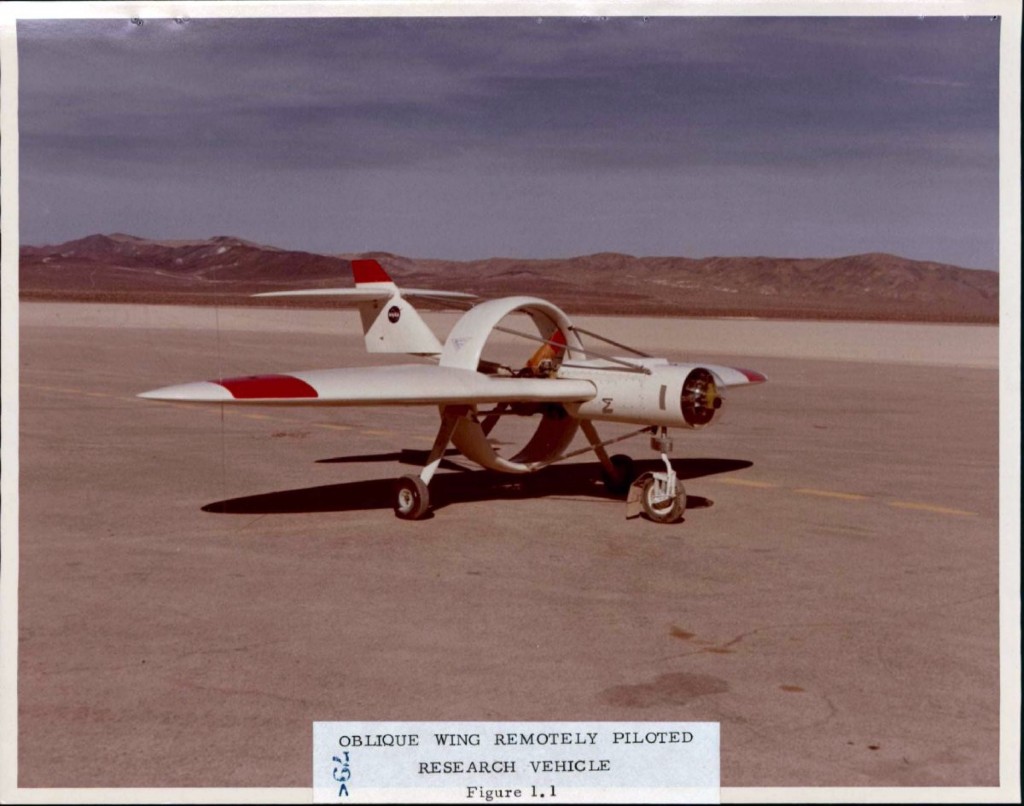

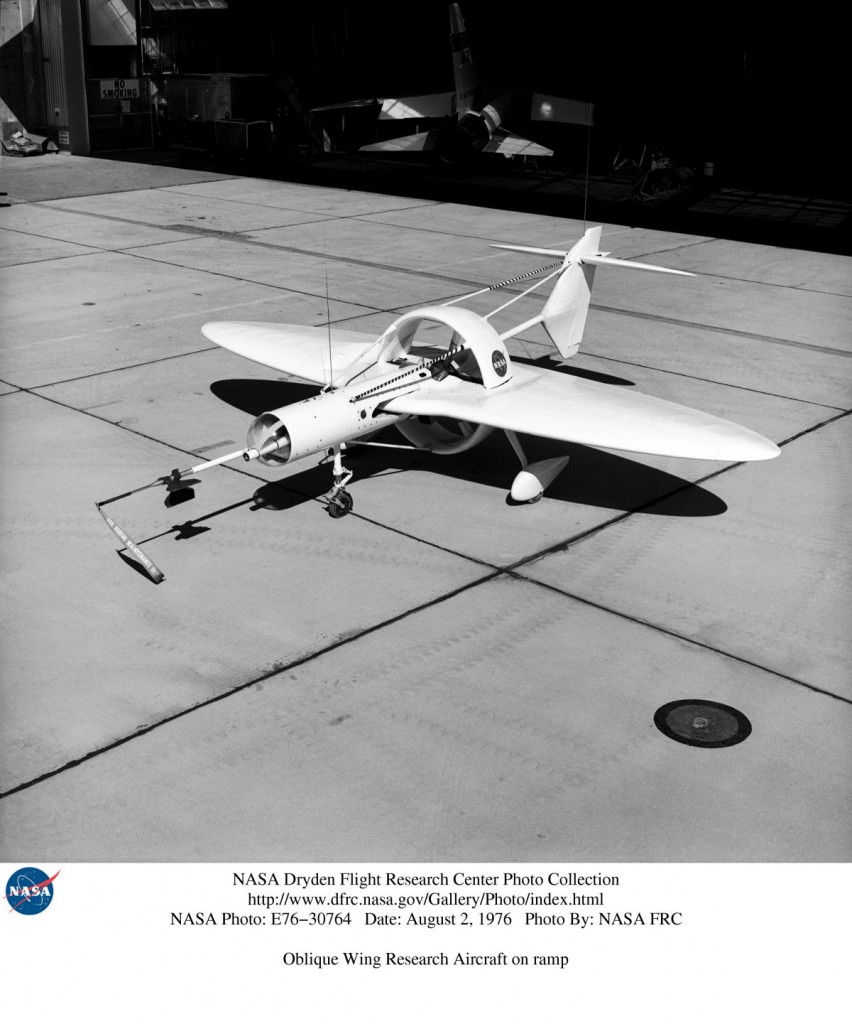
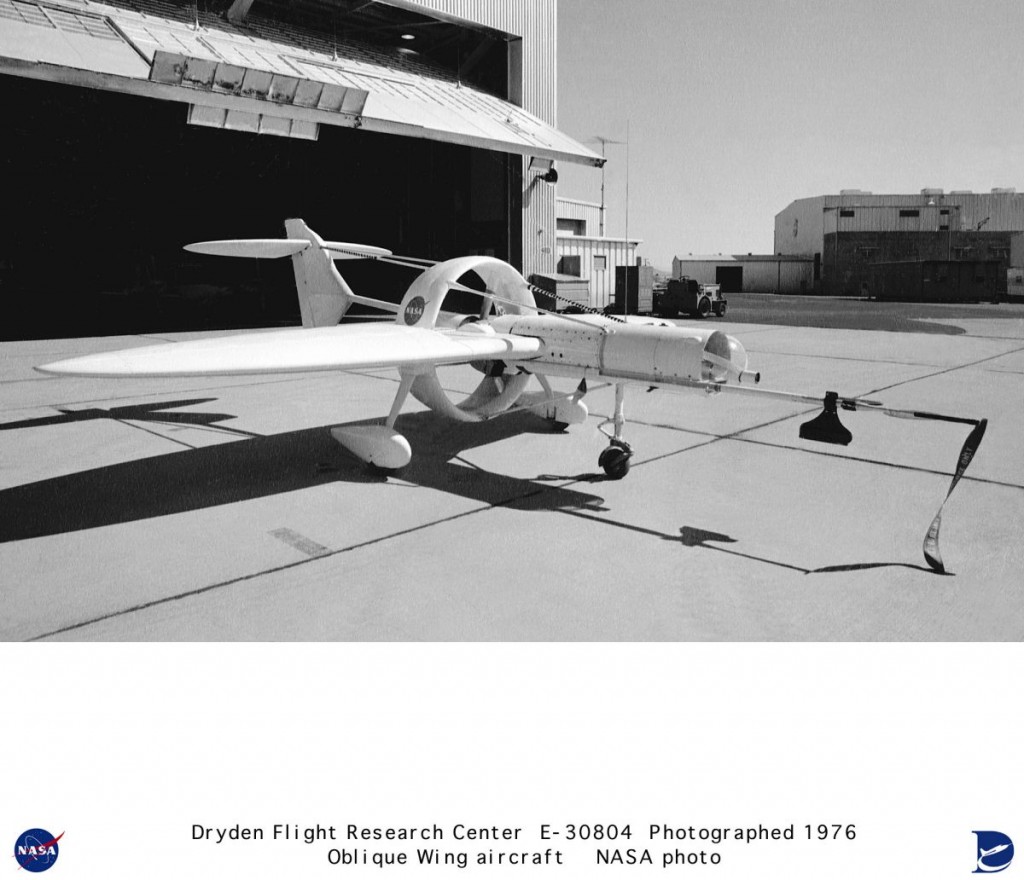
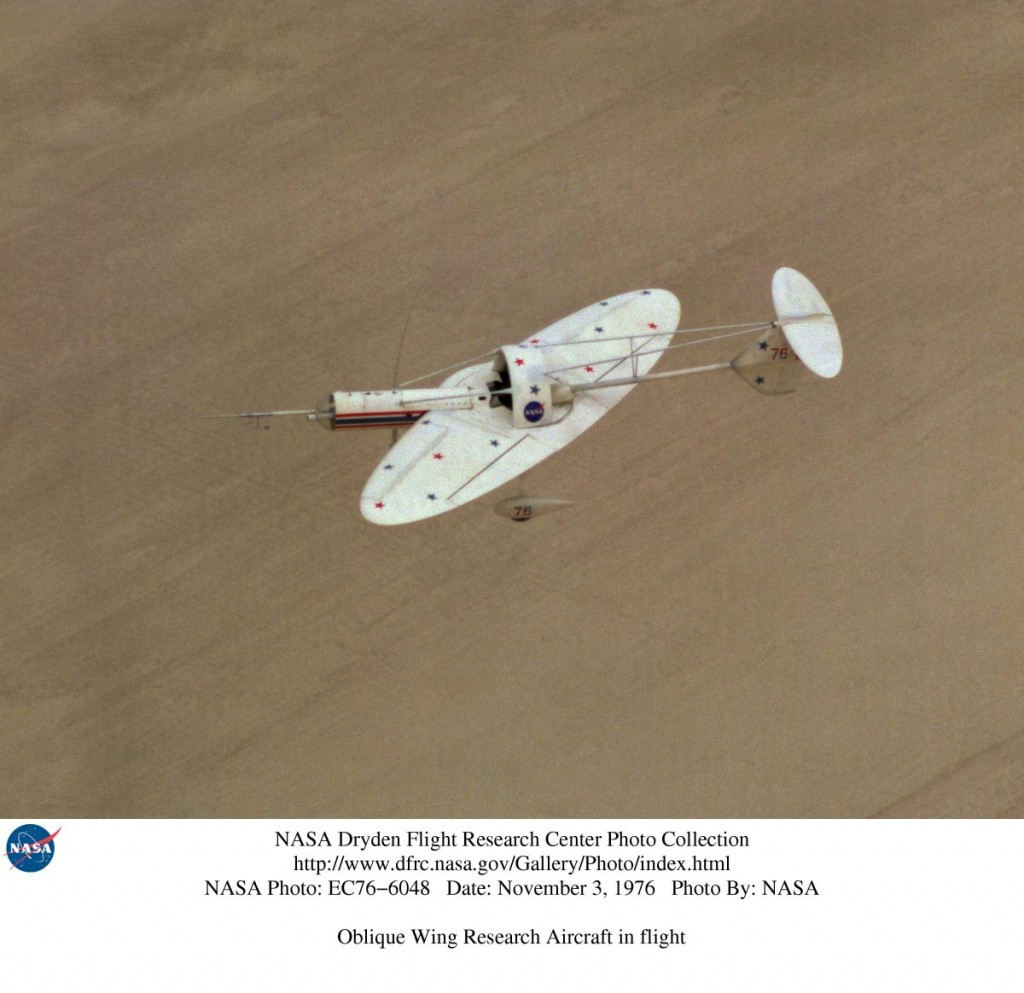
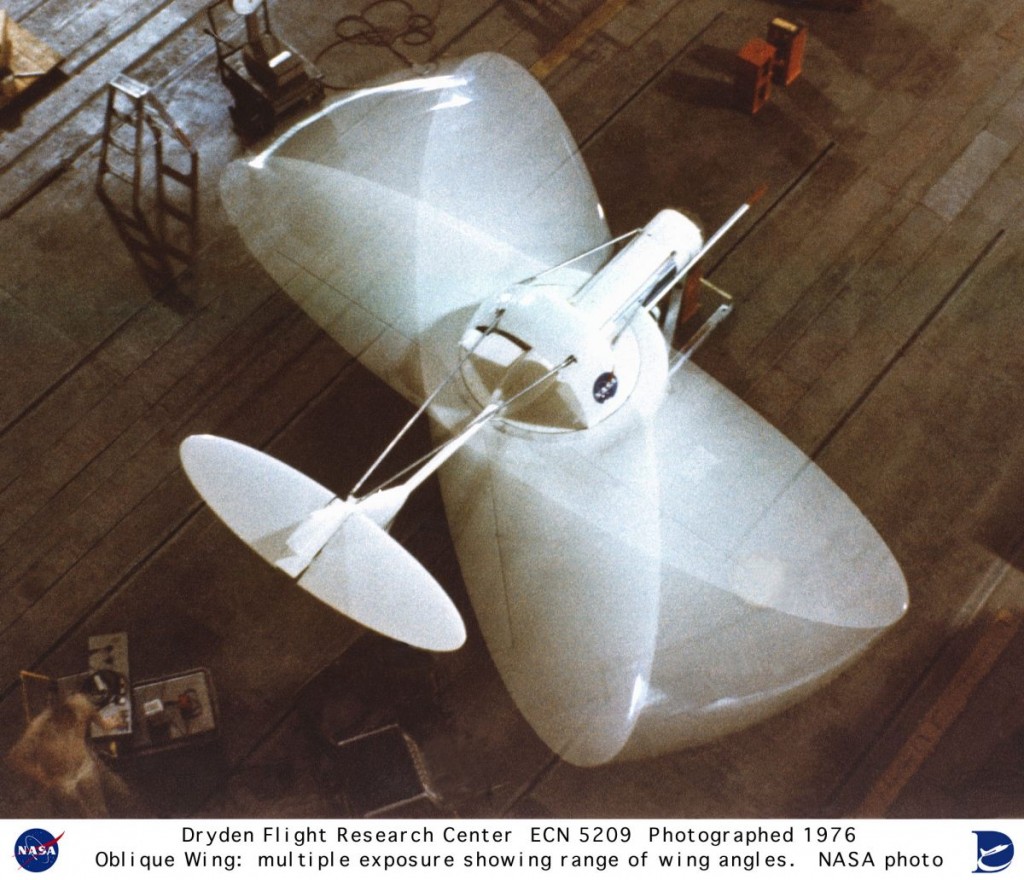
You know I think I’ve seen that sitting in the junk yard, err museum storage/restoration yard, or whatever the heck they call that area.
As I recall there was going to be a manned follow-on, using an old F8 Crusader as the base airframe. The F-8’s high wing and structural reinforcements for the variable-incidence wing made that a good candidate for the swing wing stuff.
Don’t think it got past preliminary design.
NASA hired Burt Rutan to design a subsonic manned test aircraft called the utilizing the construction methods he developed for his Vari-Eze aircraft. I attended a lecture by one of the men who built it, and he joked there were as many minor errors in the blueprints for the AD-1 as in the early prints of the Vari-Eze plans (things like the wrong size bolts being specified). He was, however, impressed with the overall design.
With this tech, you can always say “why fight wind shear when you can use it instead?”